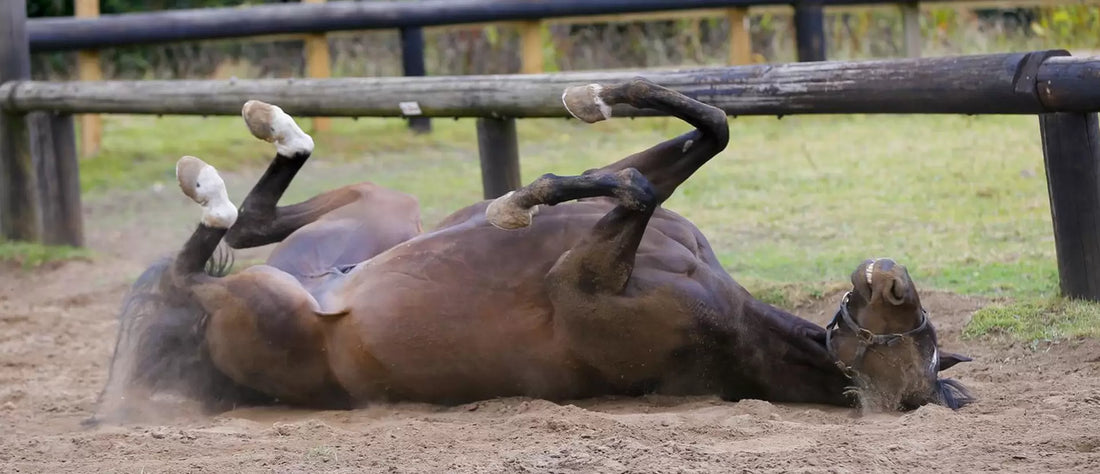
What Are Signs of Colic in Horses?
Share
Understanding, Identifying, and Responding to Equine Colic
Colic is one of the most common — and potentially serious — health issues that horse owners face. It refers to abdominal pain, which can result from a variety of gastrointestinal problems. Recognizing the early signs of colic in horses can make all the difference when it comes to treatment and recovery.
In this post, we’ll break down the most common signs of colic in horses, what you should do if your horse is showing symptoms, and how to help prevent it in the future.
What Is Colic in Horses?
Colic isn’t a specific disease but a general term for abdominal discomfort. It can range from mild gas buildup to severe intestinal blockages or twists that may require surgery. While many cases of colic are mild, some can quickly become life-threatening if not treated promptly.
Top 10 Signs of Colic in Horses
Here are the most common signs of colic to watch for:
1. Pawing at the Ground
This is often an early sign that your horse is uncomfortable. They may continuously paw with one front leg as if trying to relieve pressure.
2. Looking at or Biting the Flank or Belly
A horse experiencing colic may repeatedly turn their head toward their side or even nip at their stomach.
3. Rolling or Attempting to Roll
While horses roll for many reasons, frequent rolling—especially violently or excessively—is a red flag.
4. Kicking at the Abdomen
Some horses will lift or kick at their belly, especially when in pain.
5. Restlessness and Frequent Lying Down and Getting Up
A colicky horse may lie down, then get up quickly, only to lie back down again, often in a restless or distressed manner.
6. Sweating Without Exercise
Unexplained sweating can indicate pain and distress.
7. Lack of Appetite
Refusing feed or treats is a major warning sign. Horses are natural grazers and usually don’t skip meals.
8. Reduced or No Gut Sounds
A healthy horse’s digestive system is noisy. If you don’t hear any gut sounds with a stethoscope (or even just with your ear near their side), this could mean a blockage.
9. No Manure or Diarrhea
Both constipation and diarrhea can be associated with colic, and changes in your horse's manure should always be taken seriously.
10. Elevated Heart Rate or Breathing
Pain causes stress, which can increase a horse’s heart rate or respiration. You may also notice trembling or rapid breathing.
What To Do If You Suspect Colic
-
Call Your Veterinarian Immediately – Always contact a vet as soon as colic is suspected. Time is crucial.
-
Remove Food – Do not allow the horse to eat until a vet advises it’s safe.
-
Walk the Horse Gently – Light walking can help keep the gut moving, but don’t exhaust the horse.
-
Avoid Letting the Horse Roll – Rolling can worsen a potential twist in the intestines. Keep them standing and moving gently.
-
Monitor Vital Signs – Note changes in heart rate, temperature, breathing, and manure output to report to the vet.
Can Colic Be Prevented?
While not all cases are preventable, here are a few steps that can significantly reduce the risk:
-
Provide clean, fresh water at all times.
-
Ensure a consistent feeding routine with quality forage.
-
Limit grain and feed changes gradually.
-
Allow daily turnout and exercise.
-
Schedule regular dental and deworming care.
-
Avoid sand ingestion by feeding off the ground.
Final Thoughts
Knowing the signs of colic in horses — and acting quickly — can save your horse’s life. Always trust your instincts: if something feels off, it's better to call your vet and be safe. With prompt attention, most horses recover from colic without serious complications.
